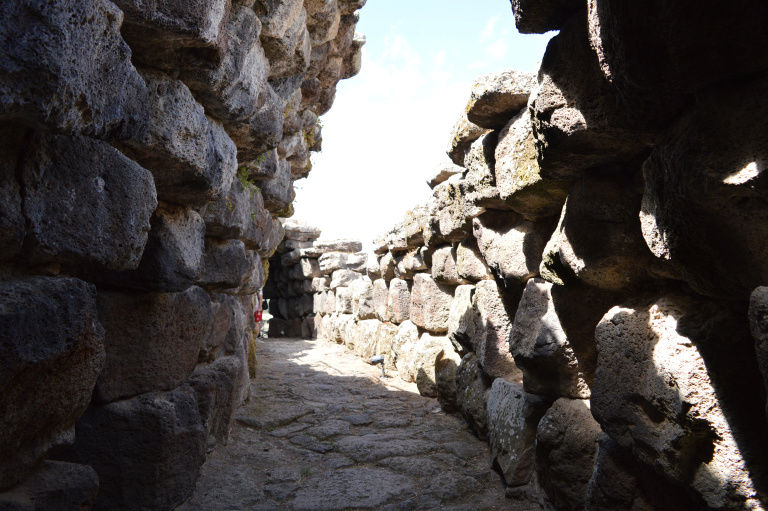



A tourist guide in Tharros told me once that Sardenia is a museum on display. He couldn’t be more correct. The island has about a 7000 Nuraghi’s or pre-historic remains strewn all over the islands – left open for public display with no long queues or unnecessary tickets. Sardenia has a story apart from the beaches, the food, the masks – its history.
I endeavor to tell the Sardenian story from the inception – its history. The Nuraghis are the oldest link Sardenia has to human civilization. The story remains untold as archeologists are still to uncover most remains that lie buried underground. Paucity of funds remains the main reason why much excavation remains undone. Many Nuraghis also unfortunately like abandoned near highways, with people free to pick pre-historic building stones to build fences.
But what are the Nuraghes?
I started my journey discovering them in the Nuragic Complex of Santu Antine in Torralba. The nurghaic complex of Santu Antine is the second largest, but the highest and most complex nuraghe in Italy. Though the purpose of the Nuraghe remains unclear, it is speculated that they served to be community centres of cultural, official, and religious exchange. As the guide explained to us, the Nuraghe’s were structures constructed roughly 2300 – 500 BC and were apparently destroyed with the arrival of the Phoenicians. To the undiscerning eye, Nuraghes in short, are conical structures, with stones arranged in a ring-like pattern on top of each other to form a tall tower.
A legacy of the stone age, with a three – floored structure and a height of 25 meters once upon a time, the Santu Antine Nuraghe remains one of the most sophisticated forms of prehistoric architecture. It is also one of the most under-discovered forms of prehistoric architecture. Not many in the world know of Nuraghes, and the lack of English speaking tourist guides even at Santu Antine, makes knowledge of these grand structures unfortunately fairly local. Several things, however, do stand out. The doors for example, also turn southeast, a direction where the Sun was known to rise. I found this aspect especially interesting, given how so many buildings in India also follow a similar logic – keeping the door in the direction of the sun.
Once you’re inside this intricate maze of stone, you can imagine how people lived in Sardinia about 1500BC years ago. They had dug sophisticated canals to draw water from the wells inside the nuraghe. Evidence of the canals remains even today:
They even had internal wells for storing water and worshiping the water – gods. The remains of these wells are preserved even today.
Walking in corridors of some of the world’s oldest civilizations makes the Nuraghes unearthly beautiful! There are several nuraghes one can explore in Sardinia apart from the Santu Antine. One is the Nuraghe Albucciu in the north-eastern part of the island. Other interesting ones are Santa Christina and Su Nuraxi – the largest nuraghic complex on the island. Given the simplicity of the nuraghes and the lack of bureaucratic noise surrounding them – visiting the Nuraghe will open your eyes to what is visiting history without standing in lines, and quarreling tourist guides. It is a date between you and time immemorial, and it is, for this reason, I urge you to visit it.
This trip was originally published on APOORVA ANUBHUTI: THE SCRIBBLES OF AN ACCIDENTAL VAGABOND























